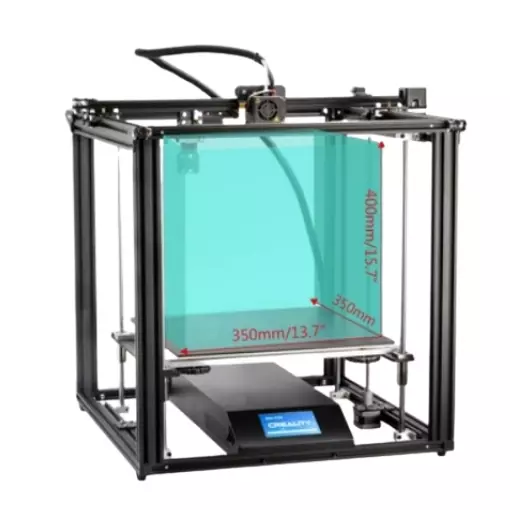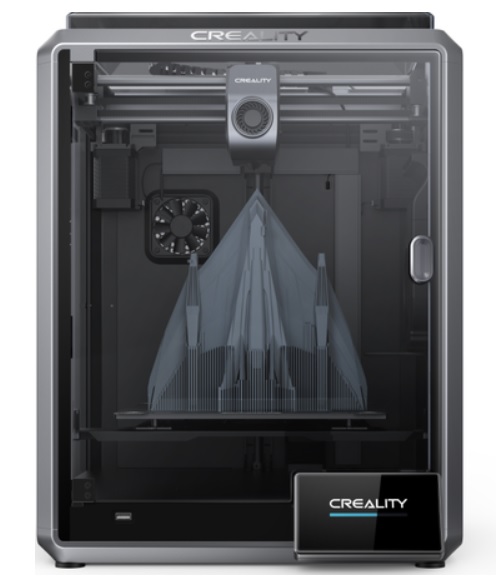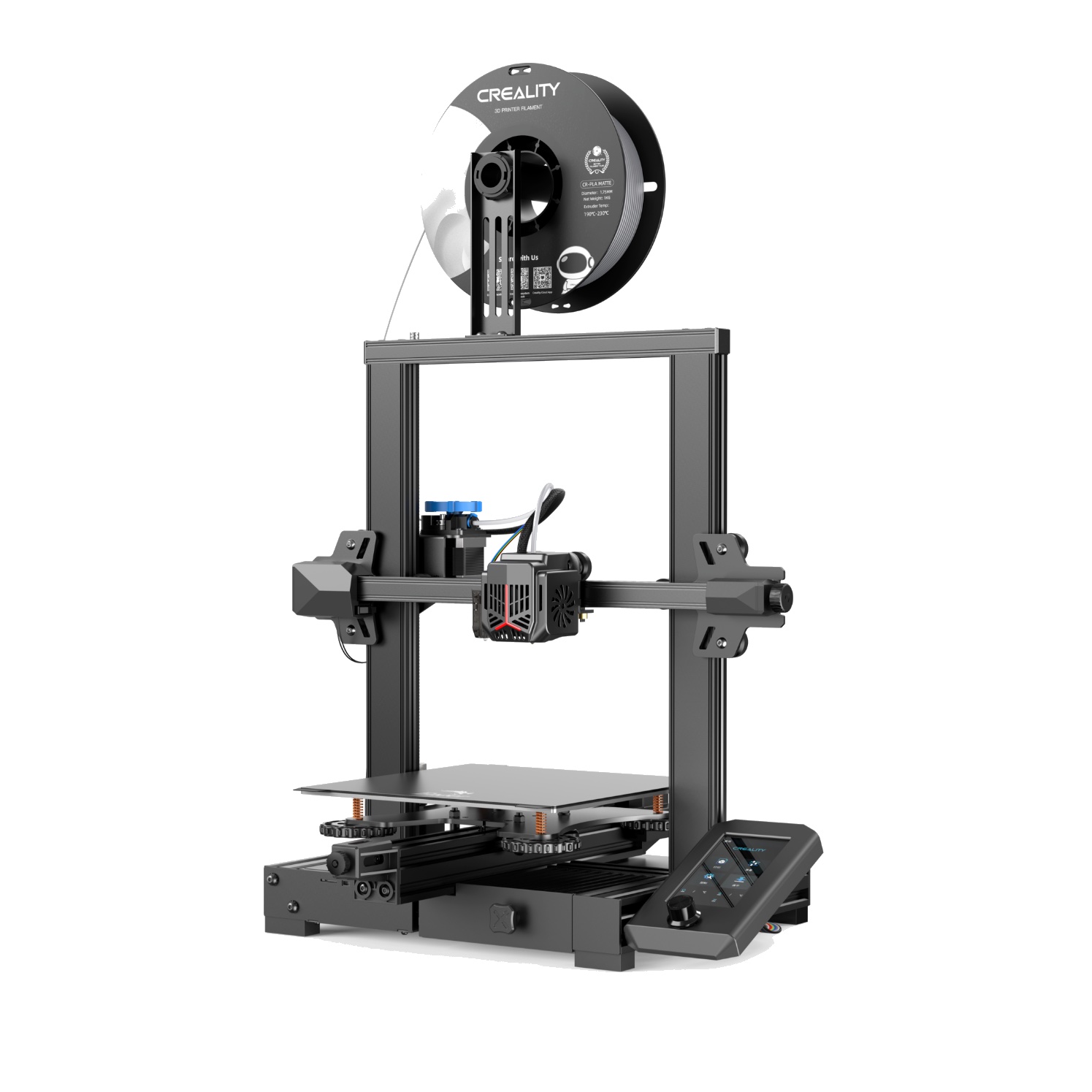Compare Ender 5 Plus vs K1 vs Ender 3 V2 Neo
Comparison between the best 3D printers
Choose the best 3D printer at the best price. The cheapest 3D printers are here.
Buy a 3D printer here with 3D Fila.
 |
 |
 |
|
| Model | Ender 5 Plus[BUY Ender 5 Plus] |
K1[BUY K1] |
Ender 3 V2 Neo[BUY Ender 3 V2 Neo] |
| Printing Material | Filament | Filament | Filament |
| Estimated price | $599,00 | $399,00 | $310,00 |
| Fabricante | Creality 3D | Creality 3D | Creality 3D |
| Release Year | 2019 | 2023 | 2022 |
| Print Volume [mm] | 350x350x400 | 220x220x250 | 220x220x250 |
| Printer Size [mm] | 632x619x666 | 355x355x480 | 438x424x472 |
| Weight [kg] | 18,2 | 12,5 | 9,8 |
| Power Loss Recovery | YES | YES | YES |
| Enclosed printer | NO | YES | NO |
| Bed Leveling | Automatic | Automatic | Automatic |
| Filament End Sensor | YES | YES | YES |
| Bed type | Heated | Heated | Heated |
| Power supply system | Bowden | Direct Drive | Bowden |
| Standard nozzle | 0,4 | 0,4 | 0,4 |
| Maximum Nozzle Temperature [°C] | 260 | 300 | 260 |
| Maximum Bed Temperature [°C] | 100 | 120 | 100 |
| Maximum printing speed [mm/s] | 180 | 600 | 80 |
| Filament holder | YES | YES | YES |
| Camera for supervision | NO | NO | NO |
| Recommended filaments | PLA, TPU, ABS, PETG | ABS, PLA, PETG, PET, TPU, PA, ABS, ASA, PC, PLA-CF, PA-CF, PET-CF | PLA, PETG |
| Recommended slicers | Cura, Simplify, Slic3r | Creality Print; Cura, Simplify3D e PrusaSlicer | Cura, Simplify, Slic3r, IdeaMaker |
| Maximum Resolution [mm] | 0,1 | 0,1 | 0,1 |
| Processor | 32 bits | 4.2.2 mainboard | |
| Display | Touchscreen TFT 4,3'' | Display touchscreen 4,3'' | Display touchscreen 4,3'' |
| Power Supply | 24V / 504W | 110/220V / 350W | |
| Connectivity | SD / USB | Ethernet / USB / Wi-Fi | SD / USB |
| Operating systems | Windows, Mac, Linux | Windows, Mac, Linux | Windows, Mac, Linux |
| Date of registration in the system | 2021-04-14 | 2023-04-17 | 2022-12-09 |
| Release date | 2019 | 2023 | 2022 |
| Extra features | The Ender 5 Plus offers a large print volume (350x350x400 mm) and fast assembly. It includes a BLTouch sensor, but with range limitations. It stands out for its dimensional accuracy, although it requires adjustments to the slicer settings. Despite the noise, its integrated design saves space, and includes features such as a filament sensor and power resumption. Ideal for large projects, it requires refinement in the settings for high-quality prints. | The K1 is an extremely fast FDM 3D printer, reaching 600mm/s, 12 times faster than standard models. Equipped with a Core XY system and lightweight print head, it offers energy efficiency and high print quality. It stands out for its dual-gear extruder and quickly heated hotend, as well as dual cooling to prevent warping. Its robust structure ensures stability at high speed, with optimized software to speed up the printing process. | The Ender 3 V2 Neo printer stands out for its automatic bed leveling with the CR Touch system, ensuring high-quality initial layers. It features an all-metal Bowden extruder for increased durability and improved filament handling. Its flexible, PC-coated magnetic build plate makes it easy to remove prints and is durable and easy to clean. It also includes a new user interface with model preview and an updated gantry design. The Ender 3 V2 Neo maintains the same build volume and temperatures as the previous version, supporting popular filaments such as PLA and ABS. It features a quiet 32-bit mainboard and additional features such as a filament sensor, print recovery, simple 3-step assembly, an integrated toolbox, and belt tensioners. |
| Support for multiple colors and materials (AMS and CFS) | NO | NO | NO |
Notes * |
|||
| Cost-benefit | 6 / 10 | 8 / 10 | 7 / 10 |
| Hardware | 2 / 10 | 4.8 / 10 | 2.8 / 10 |
| Screen | . | . | . |
| Print volume | 4 / 10 | 3 / 10 | 3 / 10 |
| Performance | 1 / 10 | 5 / 10 | 0 / 10 |
| [BUY Ender 5 Plus] | [BUY K1] | [BUY Ender 3 V2 Neo] |
Conclusion |
| In comparing the Ender 5 Plus, K1, and Ender 3 V2 Neo, each 3D printer showcases distinct advantages and characteristics that cater to different user needs. The **Ender 5 Plus** stands out for its larger print volume, making it an excellent choice for larger projects, although it may require some adjustments for optimal performance. Its solid construction and features like automatic bed leveling and a power loss recovery system add to its appeal, particularly for those who prioritize dimensional accuracy and detailed prints. However, its higher price point may not translate effectively into cost-benefit when compared to the other models. The **K1**, launched recently in 2023, is a game-changer in speed, boasting capabilities up to 600 mm/s. This significantly enhances productivity, making it ideal for users who need to produce high volumes quickly. Its Core XY architecture and efficient cooling system contribute to high print quality and stability, making it an excellent value for speed enthusiasts. While it lacks a large print volume, it compensates with its exceptional performance and advanced features. The **Ender 3 V2 Neo** offers a balanced option at a competitive price point. It includes essential features such as automatic bed leveling and a user-friendly interface, making it suitable for beginners and casual users. However, its limited print volume and lower maximum printing speed may deter those looking for extensive capabilities. Nevertheless, it remains a solid choice for personal projects and smaller prints, providing a good return on investment. Ultimately, the choice between these printers hinges on specific needs: the Ender 5 Plus excels in project size, the K1 in speed and efficiency, and the Ender 3 V2 Neo in value and ease of use. Users should weigh their priorities—whether it's print volume, speed, or affordability—to find the model that best suits their 3D printing ambitions. |

